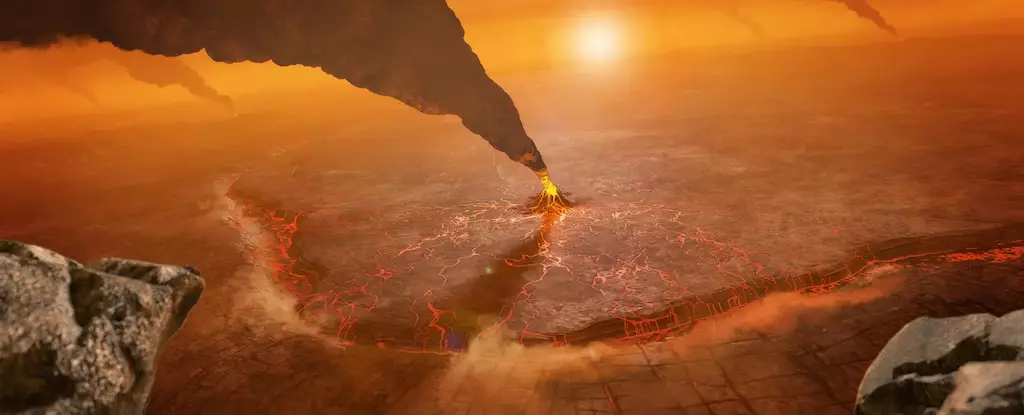Recent explorations of Venus have taken a dramatic turn, challenging long-held beliefs about this inhospitable planet. Traditionally seen as a hellish world devoid of geological activity comparable to Earth, new analyses suggest that Venus might not be so different from our home planet after all. A study leveraging decades-old data posits that ongoing tectonic-like activities may be reshaping Venus’s surface, hinting at the possibility of a dynamic geological past. Understanding Venus’s internal processes through these findings not only broadens our cosmic perspective but also presents intriguing implications for the study of planetary geology on a broader scale.
The Enigmatic Coronae
At the crux of this debate are the striking geological features known as coronae. Resembling enormous craters, these circular formations are not merely surface blemishes; they’re potential windows into Venus’s inner workings. Unlike Earth, where tectonic plates interact to cause various geological phenomena, Venus may rely on internal plumes of molten material, which manifest through the coronae, to influence its surface features. The findings highlight the sheer size and scale of these structures — often spanning hundreds of kilometers — and open the door to reinterpretations regarding the similarities between terrestrial and planetary geology.
According to Gael Cascioli, a planetary scientist associated with the University of Maryland and NASA’s Goddard Space Flight Center, the study reveals that “coronae are not found on Earth today, but may have existed when our planet was young.” This connection poses significant questions about the evolutionary pathways of rocky planets and the potential for shared geological histories.
The Mechanics Underneath
The mechanics behind the formation of coronae involve intricate processes that, although significantly different from continental drift, possess some parallels. Researchers speculate that Venus’s coronae arise from the pressure of hot plumes emanating from deep within the planet’s interior, much like the volcanic activity we observe on Earth. However, rather than being traced to the movement of tectonic plates, these structures result from localized thermal dynamics that cause surface deformations.
Using data from NASA’s Magellan probe, researchers meticulously analyzed topography and gravity measurements to construct models explaining corona formation. The study identified 75 distinct coronae, revealing that a staggering 52 of these are buoyed by hot, less dense plumes that could be facilitating a new form of tectonic activity. This discovery challenges previous assumptions about the geological dormancy of Venus.
Shifting Paradigms in Geology
The tectonic actions that are hypothesized to occur beneath the coronae could resemble one of two processes familiar to Earth scientists: subduction or lithospheric dripping. On Earth, subduction is the process where one tectonic plate slides beneath another, a mechanism that is responsible for creating diverse geological features. On Venus, this would manifest according to the movements instigated by the rise of plumes. Merging the two worlds of geology presents not only a scientific breakthrough but a conceptual bridge that could deepen our understanding of planetary formation.
Meanwhile, lithospheric dripping offers an alternative model of activity beneath the Venusian surface. The implications are staggering; as segments of the lithosphere are heated and begin to melt, the resultant drips could create a complex, dynamic cooking pot of materials that travel through the planet’s interior.
The Promise of Future Exploration
Despite the extreme conditions on Venus — searing temperatures, crushing atmospheric pressure, and acid rain — the discoveries surrounding coronae highlight tantalizing opportunities for future exploration. As Anna Gülcher from the University of Bern aptly notes, “Coronae are abundant on Venus… we can now say there are most likely various and ongoing active processes driving their formation.” This sentiment captures the excitement within the scientific community, revealing a renewed interest in Venus as a subject of study, where intriguing questions surrounding planetary evolution and geological activity await to be answered.
The findings impart a sense of urgency to expand our exploration efforts towards Venus. With a robust understanding of coronae, scientists can not only enrich the story of our solar system but also potentially glean insights relevant to the evolution of habitable environments on other rocky planets. The expansive geological narrative unfolding on Venus serves as a reminder of the complexity and diversity of planetary processes, urging the scientific community to rethink what we know — or think we know — about the cosmos.

